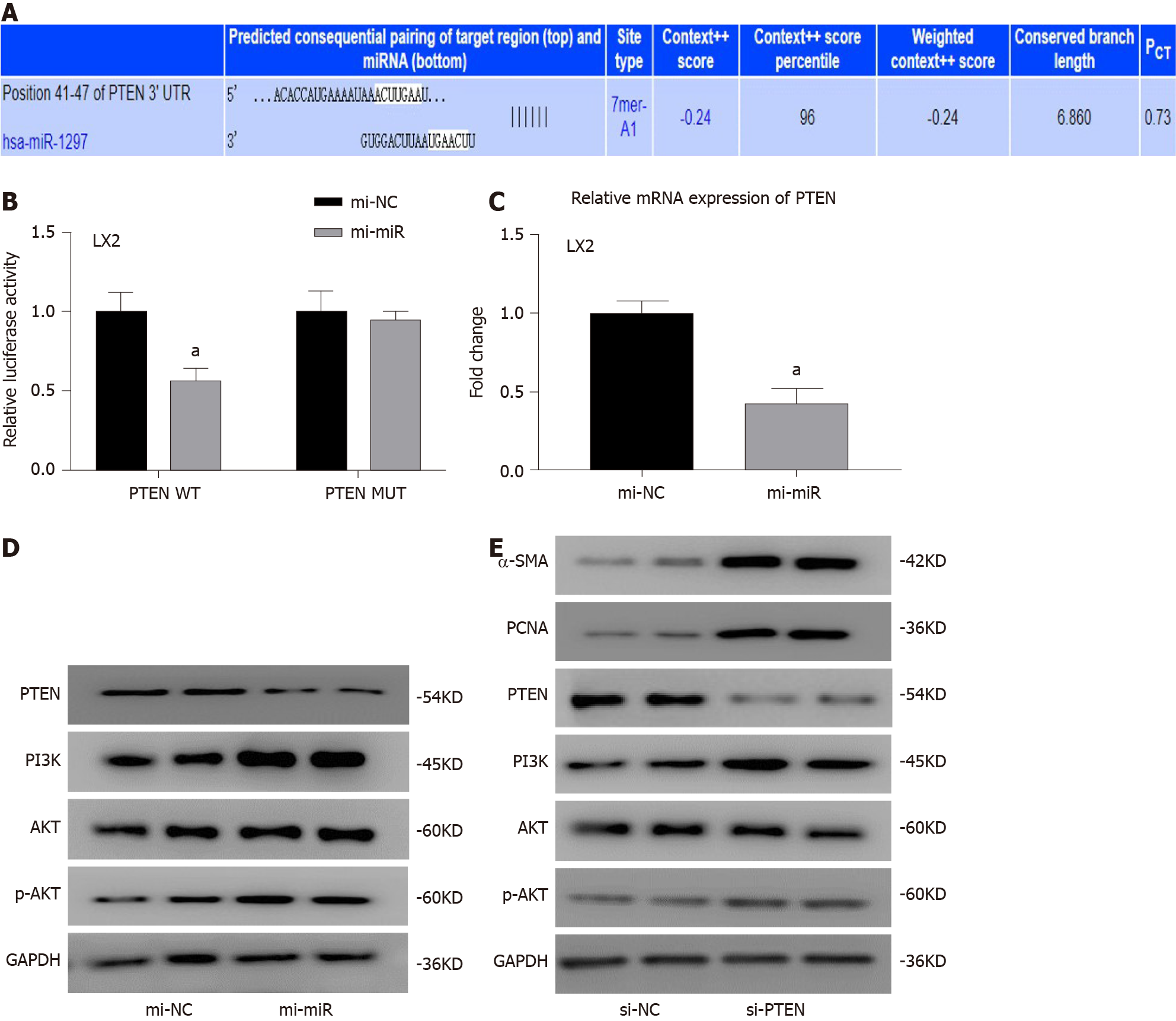Copyright
©The Author(s) 2021.
World J Gastroenterol. Apr 14, 2021; 27(14): 1419-1434
Published online Apr 14, 2021. doi: 10.3748/wjg.v27.i14.1419
Published online Apr 14, 2021. doi: 10.3748/wjg.v27.i14.1419
Figure 5 MicroR-1297 promoted hepatic stellate cell activation and proliferation by targeting the PTEN signaling pathway.
A: Binding site of PTEN mRNA with microRNA (miR)-1297 from TargetScan database; B: LX2 cells were cotransfected with luciferase reporter constructs containing a wild-type or mutant 3’-UTR of PTEN and 50 nmol/L miR-1297 mimics for 24 h. Then relative luciferase activity was assessed. PTEN wild-type (PTEN WT) microRNA mimics of negative controls: 1.00 ± 0.12 vs miR-1297 mimics: 0.56 ± 0.08; PTEN mutant (PTEN MUT) microRNA mimics of negative controls (mi-NC): 1.00 ± 0.13 vs miR-1297 mimics (mi-miR): 0.95 ± 0.05; C: Relative mRNA expression of PTEN were assessed by quantitative real-time PCR after 50 nmol/L miR-1297 mimics for 48 h. microRNA mimics of negative controls: 1.00 ± 0.08 vs miR-1297 mimics: 0.43 ± 0.09; D: Relative protein expression of PTEN, PI3K, AKT and p-AKT were assessed by western blot after 50 nmol/L miR-1297 mimics for 48 h; E: Relative protein expression of α-SMA, PCNA, PTEN, PI3K, AK and p-AKT were assessed by western blot after 100 nmol/L small interfering RNA for PTEN (si-PTEN) transfection for 48 h. Statistical significance: aP < 0.05. si-NC: Small interfering RNA for negative controls.
- Citation: Luo X, Luo SZ, Xu ZX, Zhou C, Li ZH, Zhou XY, Xu MY. Lipotoxic hepatocyte-derived exosomal miR-1297 promotes hepatic stellate cell activation through the PTEN signaling pathway in metabolic-associated fatty liver disease. World J Gastroenterol 2021; 27(14): 1419-1434
- URL: https://www.wjgnet.com/1007-9327/full/v27/i14/1419.htm
- DOI: https://dx.doi.org/10.3748/wjg.v27.i14.1419









